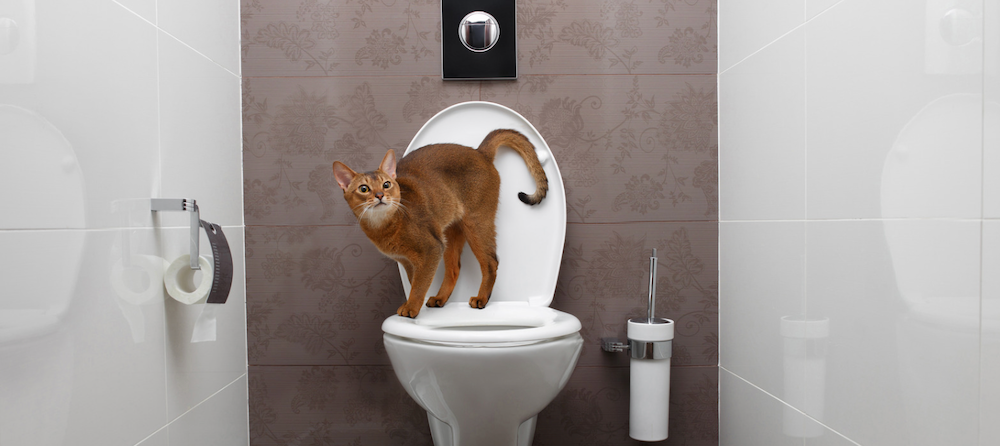Are you currently on the lookout for facts involving Why you should never flush dog poop down the toilet?

When it pertains to taking care of waste, especially animal waste, many individuals commonly turn to the hassle-free option of flushing it down the commode. Nevertheless, this apparently easy remedy can have major effects for the setting and public health. In this article, we'll explore why flushing animal waste down the toilet is a bad idea and provide alternative methods for correct disposal.
Introduction
Proper garbage disposal is crucial for maintaining ecological sustainability and public health. While it might seem safe to flush animal waste down the toilet, it can result in numerous concerns, both for the atmosphere and human health.
Dangers of flushing pet waste
Environmental influence
Flushing pet waste presents harmful germs and pathogens into rivers, which can adversely influence marine environments. These pathogens can contaminate water sources and damage aquatic life, interfering with fragile communities.
Public health worries
Animal waste consists of dangerous microorganisms such as E. coli and Salmonella, which can pose significant wellness dangers to humans. Purging animal waste down the commode can contaminate water products, causing the spread of conditions and infections.
Alternatives to flushing
As opposed to purging animal waste down the commode, there are a number of alternative disposal techniques that are much more eco-friendly and sanitary.
Composting
Composting animal waste is an eco-friendly means to take care of it. By composting, raw material is broken down into nutrient-rich soil, which can be utilized to fertilize gardens and plants.
Garbage dump disposal
Getting rid of pet waste in a land fill is an additional choice. While not as environmentally friendly as composting, it is a much safer choice to flushing, as it stops the contamination of water resources.
Animal waste disposal systems
There are customized family pet waste disposal systems available that securely and hygienically dispose of pet waste. These systems usually utilize enzymes to break down waste and eliminate odors.
Actions to correct pet waste disposal
To guarantee correct disposal of pet waste, adhere to these actions:
Scooping and getting waste
Routinely scoop and bag animal waste making use of naturally degradable bags. This prevents waste from contaminating the atmosphere.
Utilizing assigned waste bins
Dispose of bagged pet waste in marked waste bins, such as compost bins or landfill bins. Avoid flushing it down the toilet in all prices.
Cleansing litter boxes and pet dog locations consistently
Consistently clean can and family pet areas to stop the build-up of waste and germs. Usage pet-safe cleaning products to maintain hygiene.
Benefits of correct disposal techniques
Taking on correct disposal approaches for pet waste uses several benefits:
Minimized environmental pollution
Correct disposal methods lower the risk of environmental pollution, securing rivers and communities from contamination
Decreased threat of water contamination.
By staying clear of flushing pet waste down the commode, the danger of water contamination is considerably minimized, securing public health.
Enhanced sanitation and health
Appropriate disposal techniques advertise much better sanitation and health, producing a much safer atmosphere for both human beings and animals.
Conclusion
Finally, flushing pet waste down the toilet is hazardous to the setting and public health. By adopting different disposal approaches and complying with correct waste management practices, we can lessen the unfavorable influence of animal waste and add to a cleaner, healthier world.
What To Do With Dog Poo – The Do's And Don'ts Of Disposing Of Faeces
Dog poo bins
Some councils provide dedicated dog waste bins in popular dog-walking areas that can take dog poo that has been bagged but you can legally dispose of dog waste in any public litter bin, as long as it is securely bagged. This also applies to your wheelie bin at home.
Do not flush
Water companies do not recommend flushing dog faeces down the toilet because certain parasites can survive the water processing treatment and are potentially harmful to humans. You should also never consider flushing dog poo that has been bagged down the toilet as the bags will not break down and instead create severe blockages in the sewage system.
In the woods
The Forestry Commission promotes a ‘stick and flick’ method for dealing with waste in the woods. This means finding a stick and using it to flick any poo from off the path so that it is out of the way of other walkers. You could also bury it as long as it is not in an area where there might be livestock.
Livestock
Parasites found in dog poo can be transmitted to livestock if they inadvertently eat infected faeces that has been left on grazing land. This could result in the death of sheep or abortion in cattle so you should always make sure you pick up your dog’s waste in fields where livestock could be present.

Consistently clean can and family pet areas to stop the build-up of waste and germs. Usage pet-safe cleaning products to maintain hygiene.
Benefits of correct disposal techniques
Taking on correct disposal approaches for pet waste uses several benefits:
Minimized environmental pollution
Correct disposal methods lower the risk of environmental pollution, securing rivers and communities from contamination
Decreased threat of water contamination.
By staying clear of flushing pet waste down the commode, the danger of water contamination is considerably minimized, securing public health.
Enhanced sanitation and health
Appropriate disposal techniques advertise much better sanitation and health, producing a much safer atmosphere for both human beings and animals.
Conclusion
Finally, flushing pet waste down the toilet is hazardous to the setting and public health. By adopting different disposal approaches and complying with correct waste management practices, we can lessen the unfavorable influence of animal waste and add to a cleaner, healthier world.
What To Do With Dog Poo – The Do's And Don'ts Of Disposing Of Faeces
Dog poo bins
Some councils provide dedicated dog waste bins in popular dog-walking areas that can take dog poo that has been bagged but you can legally dispose of dog waste in any public litter bin, as long as it is securely bagged. This also applies to your wheelie bin at home.
Do not flush
Water companies do not recommend flushing dog faeces down the toilet because certain parasites can survive the water processing treatment and are potentially harmful to humans. You should also never consider flushing dog poo that has been bagged down the toilet as the bags will not break down and instead create severe blockages in the sewage system.
In the woods
The Forestry Commission promotes a ‘stick and flick’ method for dealing with waste in the woods. This means finding a stick and using it to flick any poo from off the path so that it is out of the way of other walkers. You could also bury it as long as it is not in an area where there might be livestock.
Livestock
Parasites found in dog poo can be transmitted to livestock if they inadvertently eat infected faeces that has been left on grazing land. This could result in the death of sheep or abortion in cattle so you should always make sure you pick up your dog’s waste in fields where livestock could be present.

As an avid person who reads on Should you flush animal waste down the toilet, I was thinking sharing that post was really useful. Liked our posting? Please share it. Let others locate it. Thank you so much for taking the time to read it.
Call Today